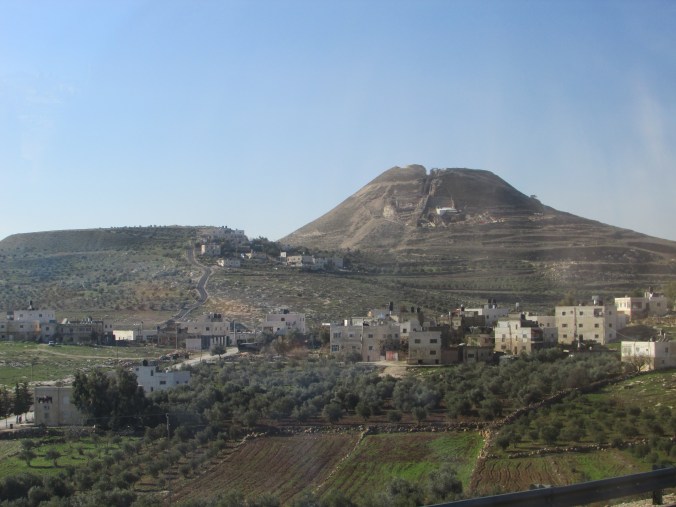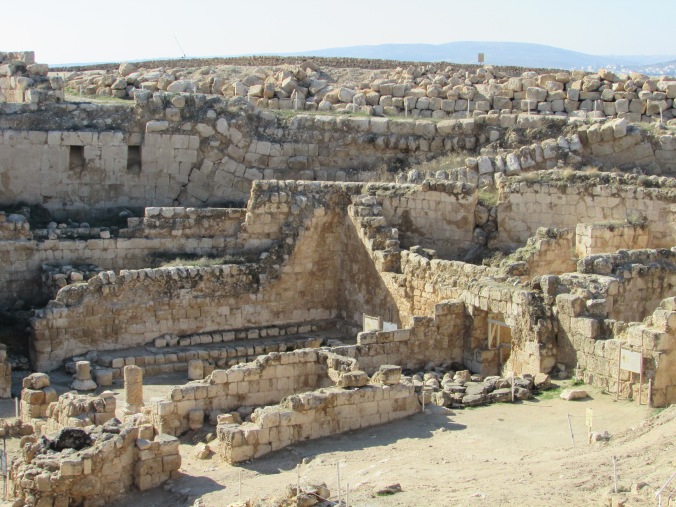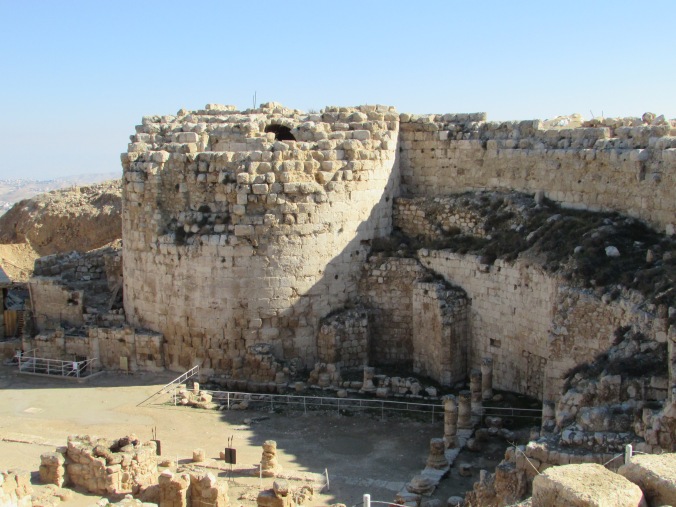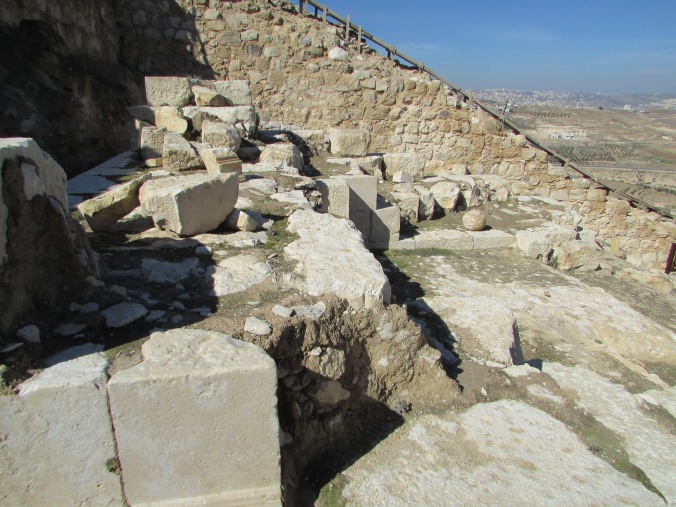Our first morning in Jerusalem took us out of the city to the south to visit the site of yet another one of Herod the Great’s amazing construction projects. Like his seaport at Caesarea Martima where no natural port existed and his amazing mountaintop retreat at Masada, Herodium appeared to me to be a monument to the man’s ego! This was the same Herod who, frightened by the news of the birth of another king, ordered the massacre of every baby boy under the age of two in Bethlehem and its vicinity to protect his own throne. (Matthew 2:1-16)
We tend to think of mountains as immovable, but not if you’re Herod the Great! He wanted a palace and fortress built on a hilltop with a view of Jerusalem. When he discovered that the city couldn’t be seen from the hill that he’d chosen, he simply had slave labour move it over!

The mountain that moved!
Herodium was thought to be one of Herod’s favourite palaces and it was here that he chose to be buried. Excavation of the site began in 1972 and has continued intermittently ever since. In 2007, lead archeologist, Ehud Netzer, found the remains of Herod’s tomb at a flattened site halfway up the hillside. Sadly, he fell to his death at the site in 2010.



The site of Herod’s tomb
Herodium was conquered and destroyed by the Romans in 71 AD, but it was used as the headquarters of the Bar Kokhba revolt 60 years later. Inside the system that was originally built to collect and store water, supporting walls, additional passages and rooms were built to house the rebels.
The hill was slick with gumbo mud that clung to our shoes like glue making them heavier with each step we took, but we climbed to the top, down into the underground chambers and around the hillside to the tomb location. It was a chilly morning and there was ice on the puddles. Perhaps the most fun of all was watching our guide, Shimon, who had never seen such a thing before, stomping around in them like a delighted child!

Back in Jerusalem, we visited the Israel Museum to see an amazing scale model of the city and then the Shrine of Book Museum. In addition to actual fragments of the Dead Sea Scrolls that were discovered in caves along the northwest shore of the Dead Sea between 1947 and 1956, we also saw a replica of the Great Isaiah scroll. About 24 feet long and 11 inches high, it is the oldest complete copy of the Book of Isaiah that has ever been found. Being there brought back memories of one of my favourite professors at the University of Calgary in the early 1970s. Dr. Peter Craigie was a Dead Sea Scrolls scholar who authored 7 books and over 40 articles before his untimely death at the age of 47 as a result of a car accident in 1985. I never imagined that I would have the opportunity to lay my eyes on the scrolls that were his passion!


Nice post! Thanks for the interesting info!
You’re welcome! I’m glad you enjoyed it.
So cool. I wonder why he was entombed halfway up the hill, instead of at the top?
Good question! I have no idea.
Pingback: Sneaker love | Following Augustine
Pingback: The Great revolt and Many stories concealed | Bijbelvorser = Bible Researcher